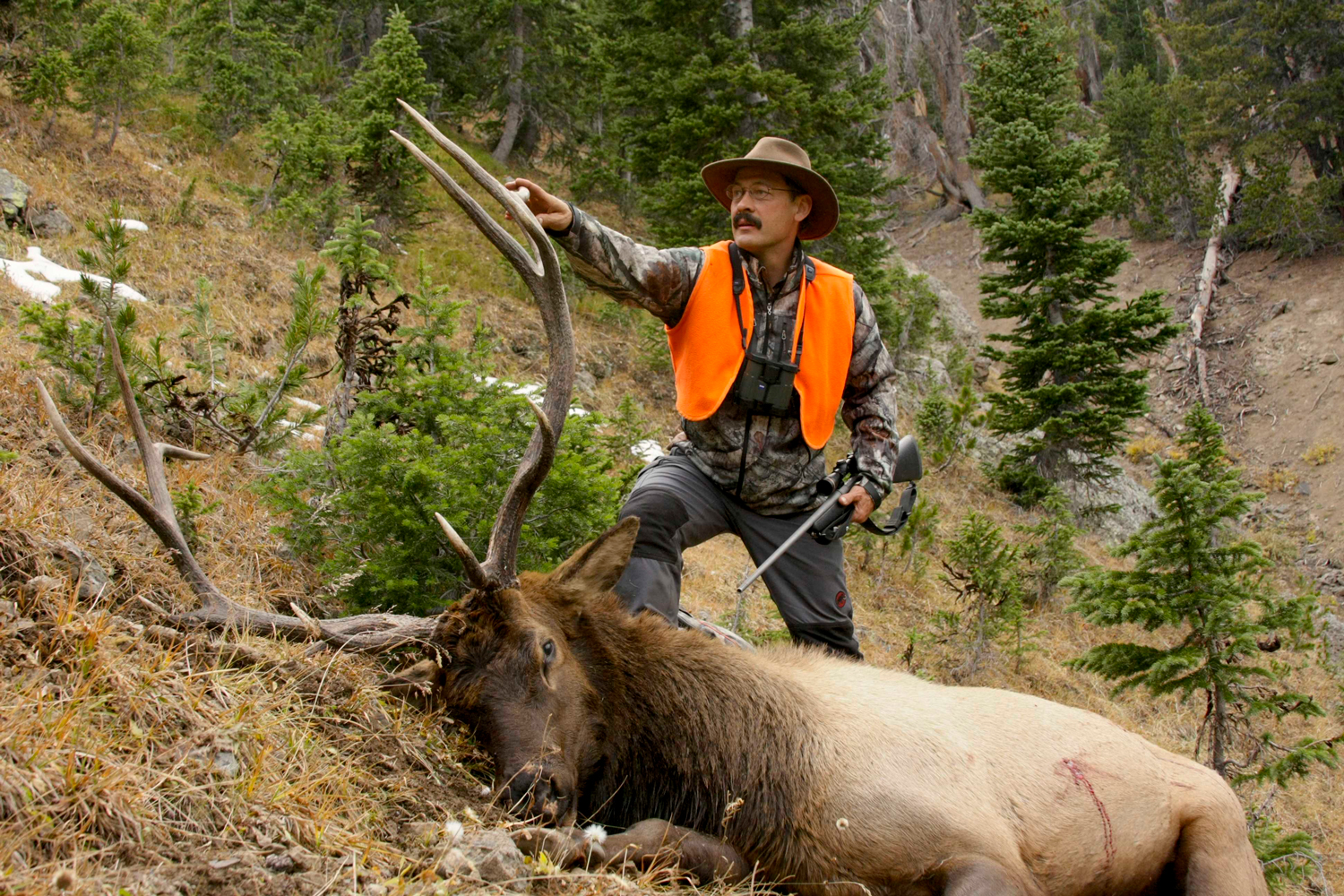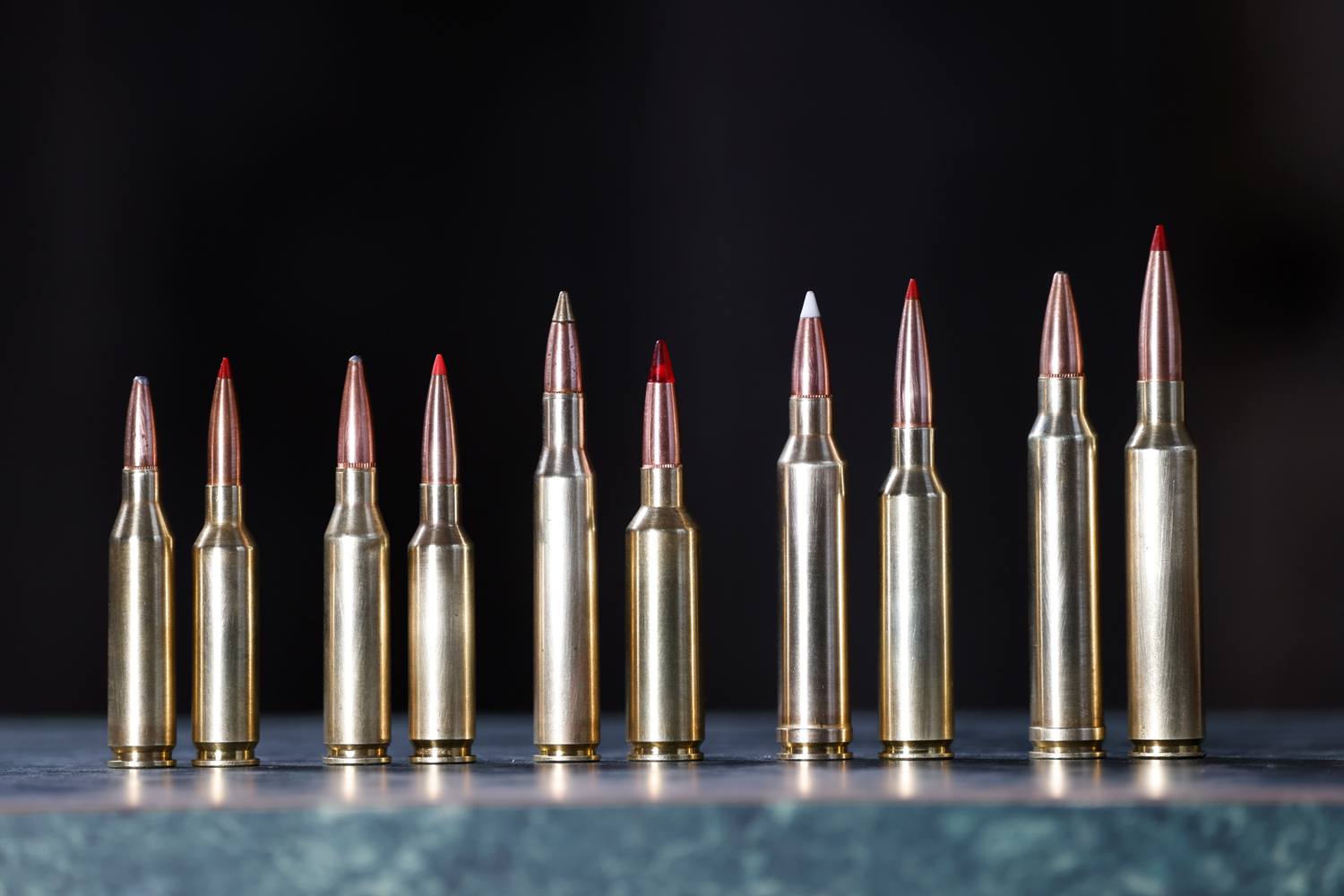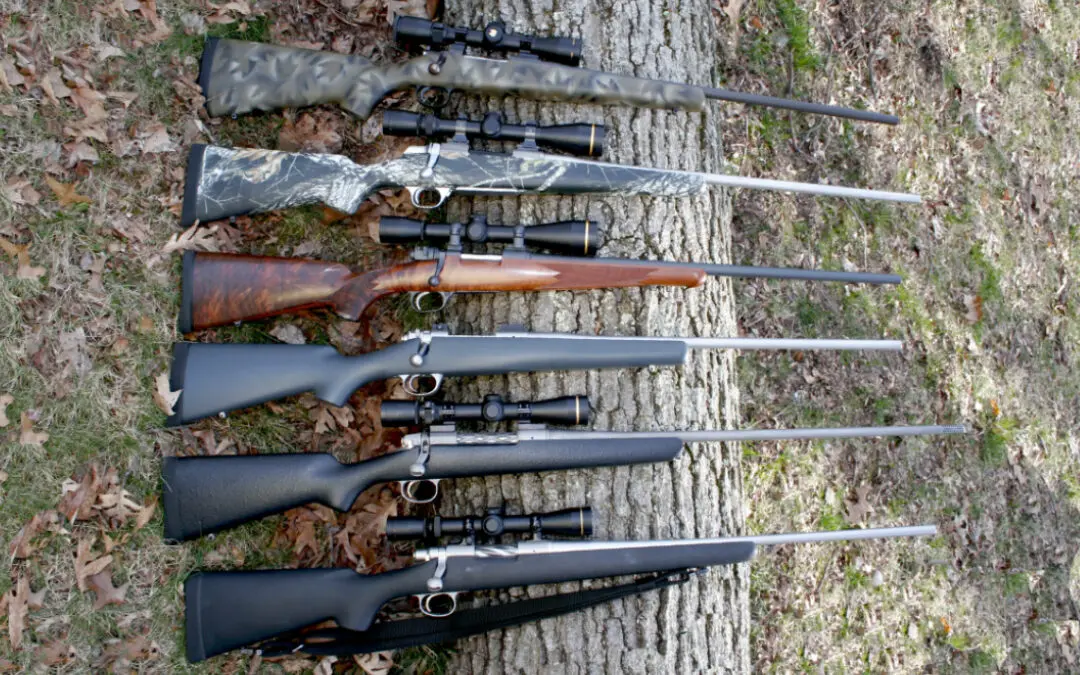Sheep hunters often get obsessed. Not just with rams, horns and mountains, but backpacks, boots, optics and rifles. Especially rifles.
Just as backpackers cut the handles off toothbrushes and labels off shirts, so do sheep hunters shave superfluous ounces from rifles. The promise of a sheep hunt has inspired many, if not most, lightweight rifles. The Austrians and Germans probably started this while pursuing chamois in the Alps with 6-pound kipplaufs and trimmed down 6.5x54mm Mannlicher-Schoenauer carbines.
Mountain sheep might also have been behind Winchester’s creation of the Model 70 Featherweight in 1952, but in its original format and chambered for the all-new 308 Winchester, the Featherweight weighed closer to 7 pounds than 6. But that was 2 or 3 pounds lighter than the standard M70s of the day. Contributing to its mass was its standard-length action, the 30-06-length magazine box partially blocked to better accommodate the 1/2-inch shorter 308 cartridges. But when chambered for Jack O’Connor’s favorite sheep cartridge, rams were in trouble. The 270 Winchester-chambered Featherweight carried lightly enough in a scabbard and shot flat enough that Mr. O’Connor could dismount, slide the Winchester free, and sit or flop prone quickly enough to settle things.

A mountain goat adventure can be enhanced with an accurate, ultralight rifle like this sub-6-pound Kifaru Rambling Rifle custom in 300 WSM. One 165-grain Swift Scirocco on the brisket punched out in front of the hip to anchor this billy in British Columbia.
Backpack hunters wanted less. Horseless and hungry, this post-’60s race of new mountain-men-on-the-cheap often, if not most often, eschewed horses for budget transportation—boots with waffled outsoles. A pound or two less rifle meant a pound or two more dried food, which fueled another day or two on the mountain. Featherweight had to become downy weight. And, in the late 1970s, fiberglass shells helped get us there.
Two- to 3-pound walnut stocks gave way to hollow, durable fiberglass shells as light as 13 ounces. Innovative gunsmiths turned a cold eye to actions and assessed where heavy steel was needed and where it was superfluous. A surprising amount was superfluous. The front receiver ring, bolt locking lugs and barrel chamber were sacrosanct, for they held things together under 65,000 psi of pressure while those 130-grain spire points were ejected at 3,100 fps. Fore and aft steel, however, could be peeled and drilled to save an ounce here, an ounce there. Manufacturers turned down and abbreviated barrels to shed an ounce or four, but simple downsizing wasn’t going to satisfy the demand.

Wilderness hunting usually involves packing far and long, suggesting light is right. Shaving 2 or 3 pounds from a rifle’s mass can make or break a hunt in big country like this corner of the Wrangell Mountains in Alaska. Rifle is the 5-pound Rifles, Inc. Strata Stainless in 280 AI. The foundation is a Remington M700.
In the late 1980s, gunsmith Melvin Forbes questioned metallurgy, tested modern steel, and discovered the bulk and mass of 50- and 100-year-old actions could be scaled down significantly without compromising structural integrity. His 20-ounce, short-action receiver carved a pound or more off traditional bolt action receivers and became the foundation for a full-sized rifle with sporter contoured 22-inch barrel. What do you know, a field-ready sheep rifle weighing less than 5 pounds. The competition scrambled. Holes were drilled. Steel was shaved. The latest NASA tech was tried and applied. Kevlar. Carbon. Titanium. Ounce by ounce the weight fell away until the standard backcountry rifle emerged as a flyweight, 6 pounds to as light as 4 pounds, 7 ounces.
And they shot. Accurately. Not benchrest precisely for 10 shots, but minute-of-ram and often minute-of-angle for three or four shots, usually enough to conclude things nicely. When chambered for short-action cartridges, especially in 6.5mm or 7mm, they matched or bettered any trajectory Jack had been throwing. The neglected 284 Winchester, in particular, became the darling of the sheep fanatics from the mid-1980s until the advent of the short fat magnums in 2001.
Today, while handloaders still make the rebated 284 Winchester shoot lights out, an easier route to the far side of the cirque is the 7mm Remington Short Action Magnum chambered in fast twist barrels to take advantage of the wind deflection resistance of long, high B.C. bullets. Increasingly the 6.5 PRC and 6.8 Western are being hired to do the long-range flying. The rather radical 277 Fury from Sig Sauer might join the club if someone starts building ultra-light rifles that can safely contain the 80,000 psi maximum chamber pressures it’s allowed.

A well-built and tuned ultralight rifle is more than capable of surviving the wildest wilderness and tackling the biggest, toughest game. Two shots from this 280 AI settled this Wyoming bull from 450 yards. Bullet was 150-gr. Barnes TTSX at 3,050 fps.
A 130-grain flat-base spitzer driven 3,150 fps from a 270 Winchester in the 1950s and zeroed at 260 yards would drop 2.7 inches at 300 yards but deflect 7 inches in a 10-mph right angle wind. Today’s 6.8 Western spitting a high B.C. 165-grain Nosler Accubond at 3,082 fps and zeroed at 255 yards will drop 3 inches at 300 yards but deflect just 4.7 inches in that same 10-mph breeze.
If 2.3 inches seems too insignificant to fret, consider the 400-yard difference: 4.5 inches less deflection and an inch less drop for the heavier bullet. Hunting, like football, is a game of inches. Decision decisions.
Such are the agonies of the wilderness hunter. Researching gear options seems as much challenge as the hunt itself—but also much of the satisfaction. There’s a special feeling one gets when shouldering the perfect pack holding the perfect tent and sleeping bag when the perfect rifle, bullet and scope is on your shoulder, the perfect mountain boots on your feet, and the snowcapped peaks soaring before you. But what happens when you entertain the possibility of a grizzly encounter during your north country adventures?
Will that perfect 270 or 6.5mm be enough? Or should you play it safer with a hyper-velocity 28 Nosler? Here’s a standard-length cartridge that might put 4 to 8 more ounces into your load but 1,200 foot-pounds more punch in your projectile. If that’s a tough enough bullet, will it stop the bear? Or must you upshift to an even higher caliber. A .30, .33 or even .35?

Today’s long range cartridges firing aerodynamically efficient bullets make it easier to hit game precisely. Twenty-first century cartridges are standing to the right of their 20th century equivalents: 243 Win./6mm Creedmoor, 260 Rem./6.5 Creedmoor, 270 Win./6.8 Western, 7mm Rem. Mag./7mm PRC, 300 Win. Mag./300 PRC.
A 30-378 Weatherby Magnum will power a 220-grain bullet to 3,250 fps for 4,222 foot-pounds of grizzly punching power, but in a light rifle, if one even exists, the collateral shoulder-punching power might be more than you want to tolerate. So you investigate the 35 Whelen and the 338 Winchester Magnum. How about a 325 WSM to get back into the short actions?
Then again, O’Connor and others did calm grizzlies and even larger brown bears with the old 270 Winchester loads. Can’t the right heavy-for-caliber, tough, controlled-expansion bullet in a small sheep caliber compensate for larger mass and caliber? Isn’t putting the bullet in the right place combined with deep, deep penetration the ticket for stopping bears anyway?
And so, the debate rages, evenings filled with online searches, gun magazines, books and ballistics calculators. Weekend visits to the gun shop, handling this rifle and that, balancing length, weight and feel against the odds. The ultimate sheep rifle or the bear attack compromise?
A sheep rifle is no different than a deer rifle until it falls into the hands of an obsessed sheep hunter. Then good enough is never good enough. And light enough is never light enough.
Personal Experience
For what it’s worth, the rifles that joined me on dozens of far north wilderness sheep, mountain goat, caribou and moose hunts kept me off the grizzly menu without firing a shot. There was never a need despite trekking countless miles, sleeping with the enemy and hauling bloody meat. Normal bear precautions and likely more than a little luck were involved but, knock on wood, no bear attacks thus far.
The rifles I carried on my North American backcountry adventures from 1986 through 2023 varied from a Model 70 Featherweight 30-06 to a Browning A-Bolt 325 WSM, the only exceptions a 375 Weatherby Magnum, a 375 H&H Dakota and a Mossberg Patriot in 375 Ruger specifically for grizzly and brown bear hunts. Rifle weights ran from more than 7 pounds (those weren’t much fun) to as light as 4 pounds. Scoped, slung and fully loaded, the favorites pushed the needle to just under or at 6 pounds; a fine compromise between carry comfort and steady shooting. Most were fired prone, over a pack or sitting with portable bipod support out front, but more than a few shots were winged off-hand or sitting sans support. The claim that light rifles are too whispy to steady hasn’t proven true.
Most sheep treks found me carrying an Ultra Light Arms M20 in 284 Winchester, a Rifles, Inc. Strata Stainless in 280 Ackley Improved and a Kifaru custom in 7mm-08 or 300 WSM. The lightest cartridge/bullet I ever used for moose was a 6.5-06, 120-grain Lost River Ballistics J-36. That delivered a one-shot kill. I hired an A-Bolt Ti in 270 WSM for caribou, moose, elk and a few mule deer and whitetails. The smallest cartridge I ever fired on a sheep hunt was the then-new 243 WSSM in a heavier-than-necessary Browning A-Bolt. It collected a fine Chugach ram, three of four shots striking gold at 350 to 480 yards.
My take-away from all these adventures was that a proper bullet in the proper place was the main thing. Nary a goat, elk, moose, caribou, mule deer, whitetail nor bear ever escaped a bullet through the heart or lungs.
But none of that was ever tested against a charging bear. Choose well.

